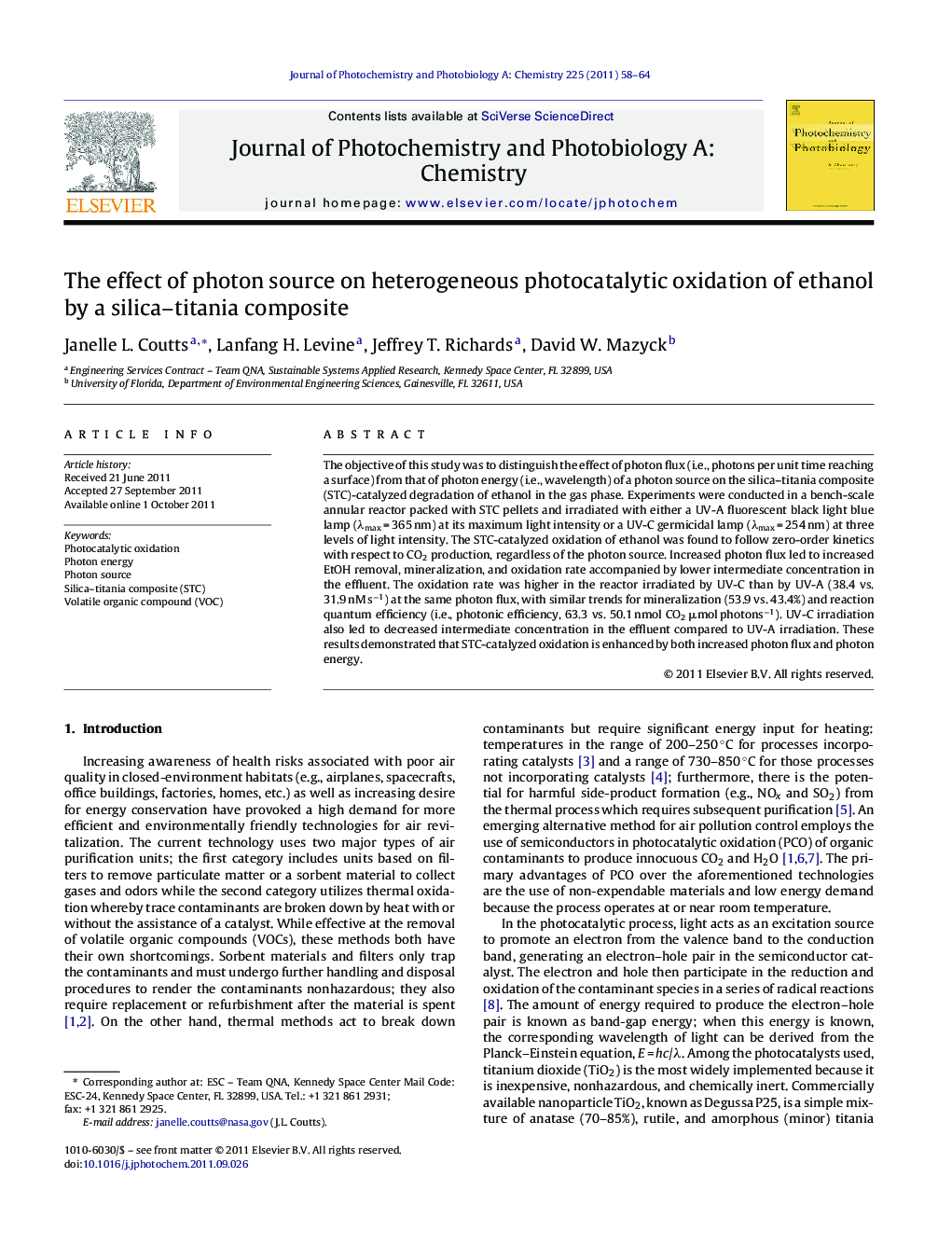| کد مقاله | کد نشریه | سال انتشار | مقاله انگلیسی | نسخه تمام متن |
|---|---|---|---|---|
| 26673 | 43970 | 2011 | 7 صفحه PDF | دانلود رایگان |

The objective of this study was to distinguish the effect of photon flux (i.e., photons per unit time reaching a surface) from that of photon energy (i.e., wavelength) of a photon source on the silica–titania composite (STC)-catalyzed degradation of ethanol in the gas phase. Experiments were conducted in a bench-scale annular reactor packed with STC pellets and irradiated with either a UV-A fluorescent black light blue lamp (λmax = 365 nm) at its maximum light intensity or a UV-C germicidal lamp (λmax = 254 nm) at three levels of light intensity. The STC-catalyzed oxidation of ethanol was found to follow zero-order kinetics with respect to CO2 production, regardless of the photon source. Increased photon flux led to increased EtOH removal, mineralization, and oxidation rate accompanied by lower intermediate concentration in the effluent. The oxidation rate was higher in the reactor irradiated by UV-C than by UV-A (38.4 vs. 31.9 nM s−1) at the same photon flux, with similar trends for mineralization (53.9 vs. 43.4%) and reaction quantum efficiency (i.e., photonic efficiency, 63.3 vs. 50.1 nmol CO2 μmol photons−1). UV-C irradiation also led to decreased intermediate concentration in the effluent compared to UV-A irradiation. These results demonstrated that STC-catalyzed oxidation is enhanced by both increased photon flux and photon energy.
Figure optionsDownload as PowerPoint slideHighlights
► Effect of photon flux and energy on STC-catalyzed degradation of EtOH was examined.
► Effluent stream consisted only of EtOH, ACD intermediate, and CO2 product.
► Increased photon flux gave higher complete mineralization and high EtOH removal.
► Use of UV-C light over UV-A light also had positive effects on the reaction system.
► Quantum efficiency decreased as the limit of useable photons was met for the STCs.
Journal: Journal of Photochemistry and Photobiology A: Chemistry - Volume 225, Issue 1, 1 December 2011, Pages 58–64